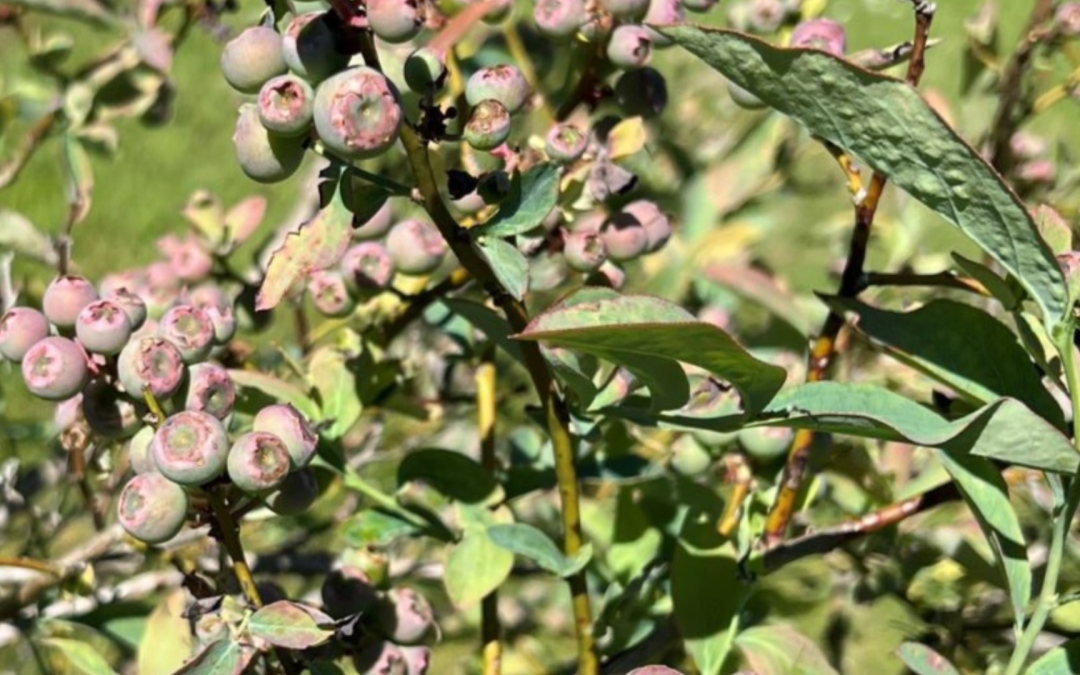
by Abbey Smith | Apr 5, 2024
Here in North Florida, it is not uncommon to see a few citrus trees in a residential landscape. With Florida being the second highest producing state of citrus, it is not out of the normal to see them when you are out and about. They are a great option to keep a lush green aesthetic in your yard. But, what other options are there for the homeowner that wants to add some edible diversity to their landscape? In this article we will be discussing a few of the many edible landscape choices that can add both diversity and a sweet treat to your yard.
A popular edible landscape option is the rabbiteye cultivar of blueberry. The rabbiteye blueberry plant is considered easier to grow for the first time blueberry grower in comparison to the southern high bush cultivar. This cultivar thrives in acidic soils and requires a soil pH of 4.0 to 5.5. When planting, the use of pine bark mulch is a great organic method to satisfy the soil pH requirement. Mixing composted pine bark mulch in the soil and adding additional mulch after the bush is planted will add to the soil’s organic matter over time. Mulching also aids the establishment of young plants and moderates soil temperatures and weed control. For variety selection, mid-to-late season rabbiteye cultivars are best for Northwest Florida, as they are more cold tolerant and less susceptible to lose their flowers and young set fruit in late winter/early spring frosts. Common mid-to-late season rabbiteye’s are ‘Vernon’, ‘Brightwell’, ‘Powderblue’, ‘Tifblue’, and ‘Georgia Giant’. Because blueberry plants are not “self-unfruitful”, they will require more than one variety to cross-pollinate with in order to produce fruit. Two is great, but three plants will also encourage larger fruit set for you and your family to enjoy!
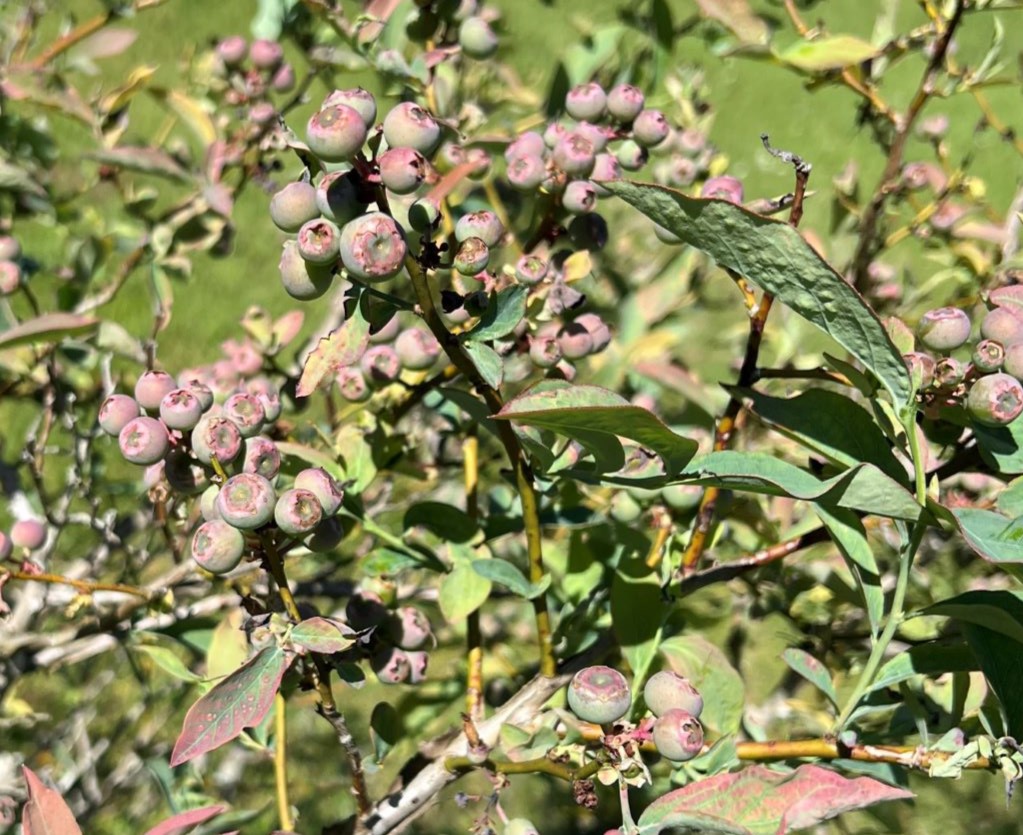
Blueberry Set Fruit, Jackson County Master Gardener Demo Garden
Another option that has steadily grown interest in the Florida Panhandle is the apple tree. There are two known cultivars of apple that are acclimated to the North Florida region due to their low chill hour requirement cold tolerance. This is the ‘Anna’ Apple and the ‘Dorsett Golden’ Apple. Apple trees will perform best in full sun locations of the yard and prefer a well-drained soil. The chilling hour requirement for these cultivars of apple are between 400-600 hours. You will begin to see the fruit ripen in the months of May to June. The ‘Anna” Apple has been compared to the well known ‘Red Delicious” that is best known in northern region of the United States. Planting should occur in early spring and planting holes should be big enough that the root system does not become over crowded from limited expansion space. There is no UF/IFAS fertilizer recommendation for the apple tree because it is not commercially produced in Florida, but generally a fertilizer such as 10-10-10 can be used.
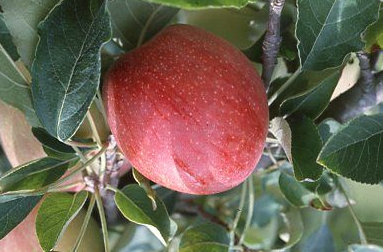
‘Anna’ Apple, Photo Credit: UF/IFAS NFREC
The blackberry is a great choice as well for an edible landscape. There are several blackberry species that are native to Florida. Most blackberries produce thorns on their shoots, but many new cultivars have been developed as thornless. When selecting your planting location, low-lying areas should be avoided to deter from over-flooding of your plants. Blackberries thrive best in well-drained soils and high air flow and should be planted between December to February. Pollination of the plant is very important to ensure the quality and quantity of the fruit produced; blackberries range from self-fruitful to self-unfruitful depending on the cultivar. ‘Apache’, ‘Flordagrand’, and ‘Choctaw’ are a few examples of many blackberry cultivars available. The first year after the blackberry has been established, it will only produce new shoots with no berries. These shoots are called primocanes. The second year, berries will produce on these shoots and then be called floricanes. It is important to cut the tip off the primocanes after they have reached about 3 ft in height to encourage the shoot to create lateral branches. Floricanes will die off after they have produced fruit. Trellises can be used as well to encourage the plant to grow upright and off the ground.
For more information, please use the following links:
https://edis.ifas.ufl.edu/publication/MG359
https://edis.ifas.ufl.edu/publication/MG368
https://edis.ifas.ufl.edu/publication/HS104
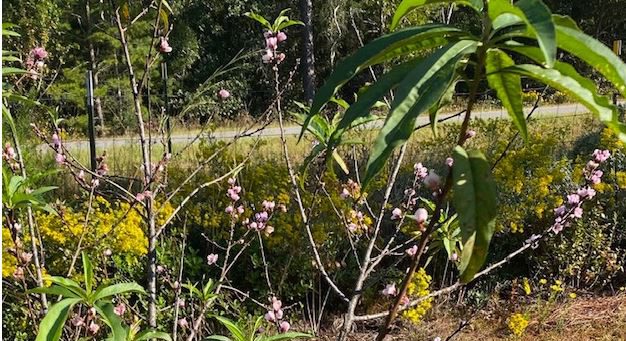
by Larry Williams | Nov 4, 2021
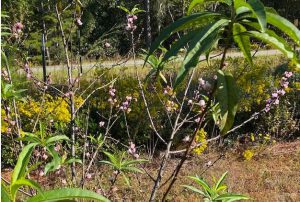
Peach tree blooming in fall. Note the yellow fall flowers of goldenrod & aster blooming in background. Photo credit: Leslie Hauquitz
Some fruit trees that normally bloom in late winter and spring are blooming now. Recently, a lady who had been out of town noticed that her peach trees were blooming when she arrived home. Knowing that peach trees ordinarily bloom around spring, she called me about this unusual occurrence. This unseasonal flowering also is occurring on some other fruit trees such as crabapple, apple and pear. This phenomenon also can occur in other deciduous spring flowering trees such as Japanese magnolia.
Anything that results in the leaves falling earlier than normal can result in this blooming out of season. Stresses that can result in the leaves falling prematurely include late season storms, insects and foliage diseases. This year’s excessive rains favored foliage diseases resulting in early leaf drop in many trees.
During most years, normal leaf drop in these trees occurs later in the season as the day length becomes shorter and when temperatures are cooler. Cooler temperatures prevent the flower buds from swelling and opening. However, if the leaves fall when the day length is longer and the temperature is warmer, the flower buds will swell and open. The leaves prevent the flower buds from developing. If the leaves fall early, during late summer or early fall, the flowers are allowed to open. With commercial apple production in some parts of the world, chemicals are applied to intentionally remove the leaves to force a second crop after harvesting the first crop of apples. This practice would not work in our area because there is not enough time to mature a second crop of fruit before cold weather arrives.
It is possible for a second crop of small fruit to develop on fruit trees that are blooming now as a result of the second flowering this year. However, because of the colder weather that will be arriving as we move into winter, any such fruit will not have time to mature. When the first killing frost or freeze occurs, these young fruits will be killed.
The lady who called about her peach trees wanted to know if she should remove the flowers and if this late flowering would negatively impact next spring’s flowering and fruit production. The flowers that opened this fall will be absent in spring – reducing the total number of flowers. However, during most springs, fruit trees produce more blooms and subsequently fruits than the trees can support. As a result, this unseasonable blooming should result in a needed thinning in next spring’s fruit crop.
So, there’s no need to remove them…just enjoy this “surprise” flower show.
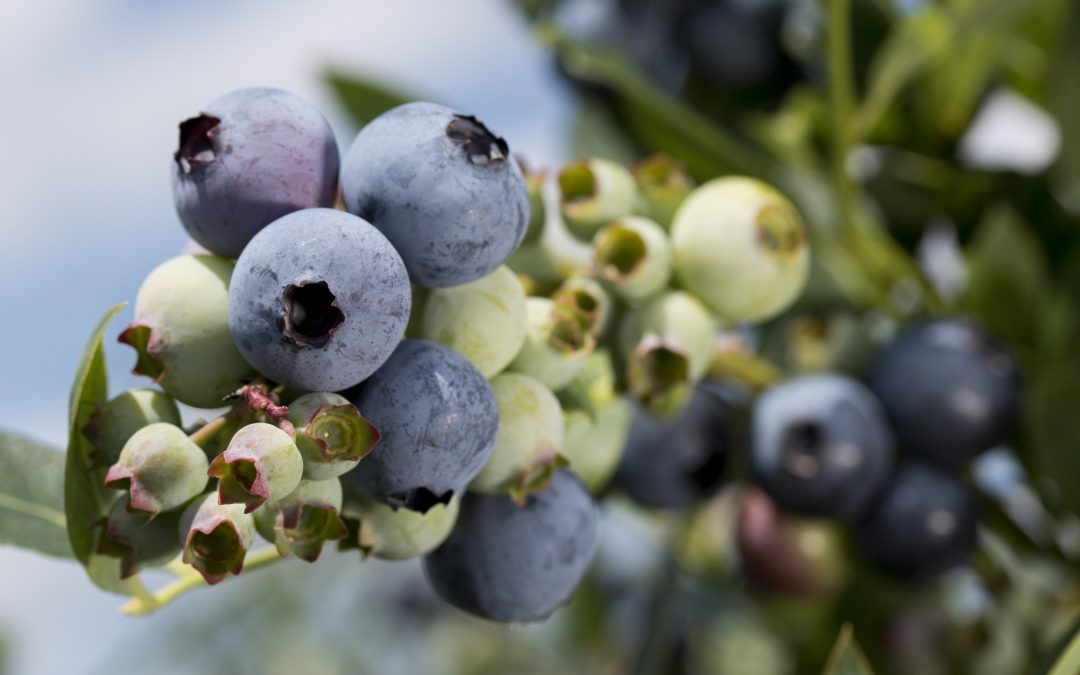
by Ray Bodrey | Jun 24, 2021
We have many choices of fruit that can be grown in the Florida Panhandle. For us hobby or dooryard growers, fruit trees can be an interesting crop to manage and most find it to be a beautiful addition to home landscapes. However, temperature and variety selection are key.
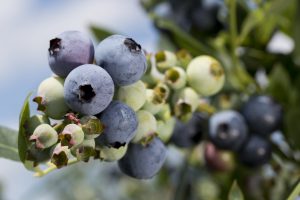
Blueberry Crop at UF/IFAS Plant Science Research & Education Unit. Photo Credit: Tyler Jones, UF/IFAS
Most fruit trees grown in the Panhandle are more temperate varieties, rather than tropical and subtropical fruits. Depending on the variety, winters in northern Florida may be too cold or may be too long for some fruit trees. Cold hardiness is a term used on fruit tree labels and reference guides. This refers to the plant’s ability to survive cooler or even freezing temperatures. In contrast, summer heat can also play a role in survivability. Some varieties are intolerant to excessive heat and humidity. The U.S. Department of Agriculture has developed a Plant Hardiness Zone Map that is helpful in selecting a variety of fruit tree: http://planthardiness.ars.usda.gov/PHZMWeb/. This is a standard by which gardeners and growers can determine which plants will thrive in their location. Northern Gulf County is in Zone 8b (15 to 20 degrees F), while coastal Gulf is in Zone 9a (20 to 25 degrees F).
Chilling requirement is another important topic when deciding on variety. Temperate zone fruit go through a “rest period” during the dormant months. For these fruit trees, a minimum length of time of cooler weather is needed for proper flowering to occur once favorable temperatures arrive. This rest period is essentially a reset. For the Panhandle, temperatures below 45 degrees F are known as chilling temperatures. The number of hours during the fall and winter that reach below this temperature equals the total chilling hours. For the Panhandle, this is rarely fewer than 500 hours. A plant that does not receive ample chilling will most likely be slow in bud and leaf development. Leaf expansion will be in increments throughout the year instead of in one period. On the other hand, colder, longer winters can cause fruit trees to end the rest stage early and begin to bud as soon as warmer temperatures arrive. This circumstance can cause cold injury later, as the Panhandle is historically known for late cold spells.
Citrus is a dooryard fruit, however it’s a subtropical fruit tree and not technically temperate. However, there are some varieties that thrive in the Panhandle. Another key to growing citrus, is to select varieties with different fruit maturity seasons. This way you can enjoy citrus year-round.
Some examples of dooryard fruit trees and varieties that are suitable for northern Florida are:
Apple: ‘TropicSweet’, ‘Anna’, ‘Dorsett Golden’
Blueberry: ‘Rabbiteye’, ‘Climax’, ‘Highbush’
Grapefruit: ‘Marsh’, ‘Ruby Red’
Lemon: ‘Myer’
Nectarine: ‘Suncoast’
Orange/Mandarin: ‘Navel’, ‘Parson Brown’, ‘Valencia’, Satsuma
Peach: ‘Gulfcrest’, ‘Gulfking’, ‘Gulfprince’
Pear: ‘Ayers’, ‘Baldwin’, ‘Kieffer’
Pecan: ‘Elliot’, ‘Stuart’, ‘Moreland’
So, where do I find information on varieties? The UF web publication “Dooryard Fruit Varieties” is a great resource. Also contact your local county extension office for more information.
Information for this article can be found in the UF/IFAS EDIS publication: “Dooryard Fruit Varieties” by J. G. Williamson, J. H. Crane, R. E. Rouse, and M. A. Olmstead: http://edis.ifas.ufl.edu/pdffiles/MG/MG24800.pdf
UF/IFAS Extension is an Equal Opportunity Institution.
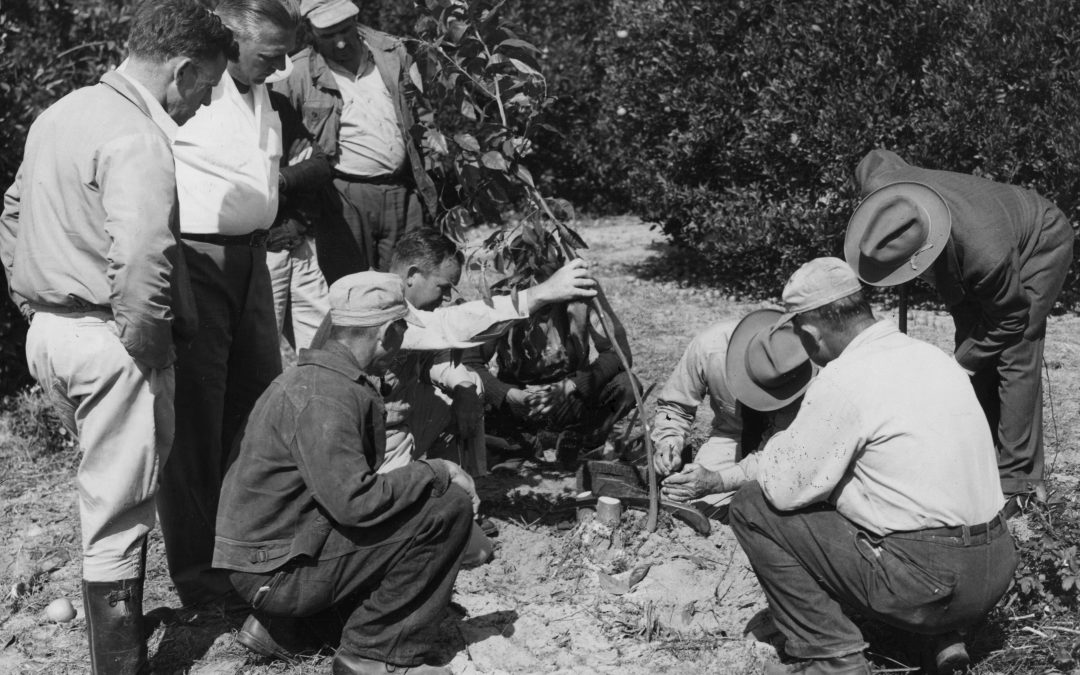
by Matt Lollar | Feb 18, 2021
It’s mid-February, cloudy, and cold. It’s time to get outside and take cuttings for fruit and nut tree grafting. The cuttings that are grafted onto other trees are called scions. The trees or saplings that the scions are grafted to are called rootstocks. Grafting should be done when plants start to show signs of new growth, but for best results, scion wood should be cut in February and early March.
Scion Selection
Straight and smooth wood with the diameter of a pencil should be selected for scions. Water sprouts that grow upright in the center of trees work well for scion wood. Scions should be cut to 12-18″ for storage. They should only need two to three buds each.
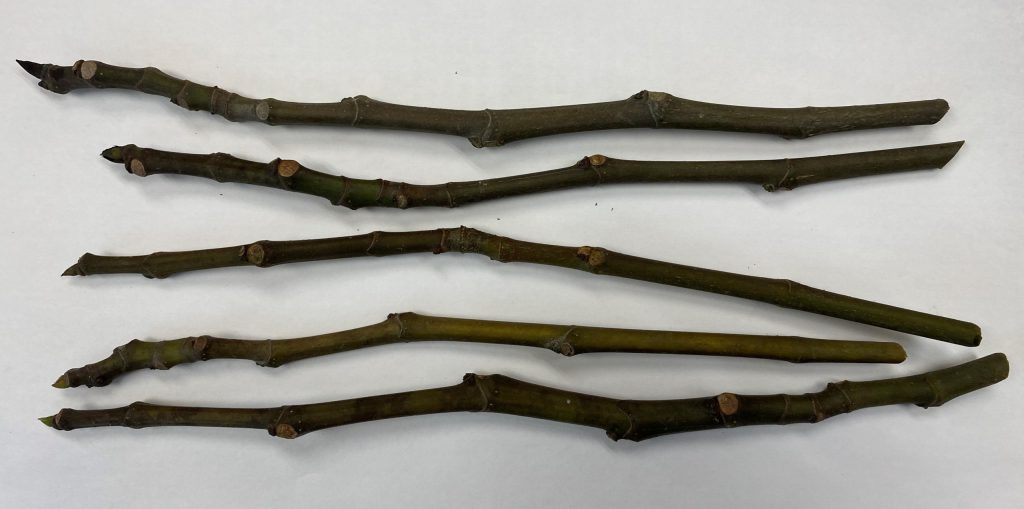
Scions ready for grafting. Photo Credit: Matt Lollar, University of Florida/IFAS Extension – Santa Rosa County
Scion Storage
Scions should be cut during the dormant season and refrigerated at 35-40°F until the time of grafting. If cuttings are taken in the field or far from home, then simply place them in a cooler with an ice pack until they can be refrigerated. Cuttings should be placed in a produce or zip top bag along with some damp paper towels or sphagnum moss.
Grafting
It is better to be late than early when it comes to grafting. Some years it’s still cold on Easter Sunday. Generally, mid-March to early April is a good time to graft in North Florida. Whip and tongue or bench grafting are most commonly used for fruit and nut trees. This type of graft is accomplished by cutting a diagonal cut across both the scion and the rootstock, followed by a vertical cut parallel to the grain of the wood. For more information on this type of graft please visit the Grafting Fruit Trees in the Home Orchard from the University of New Hampshire Extension.
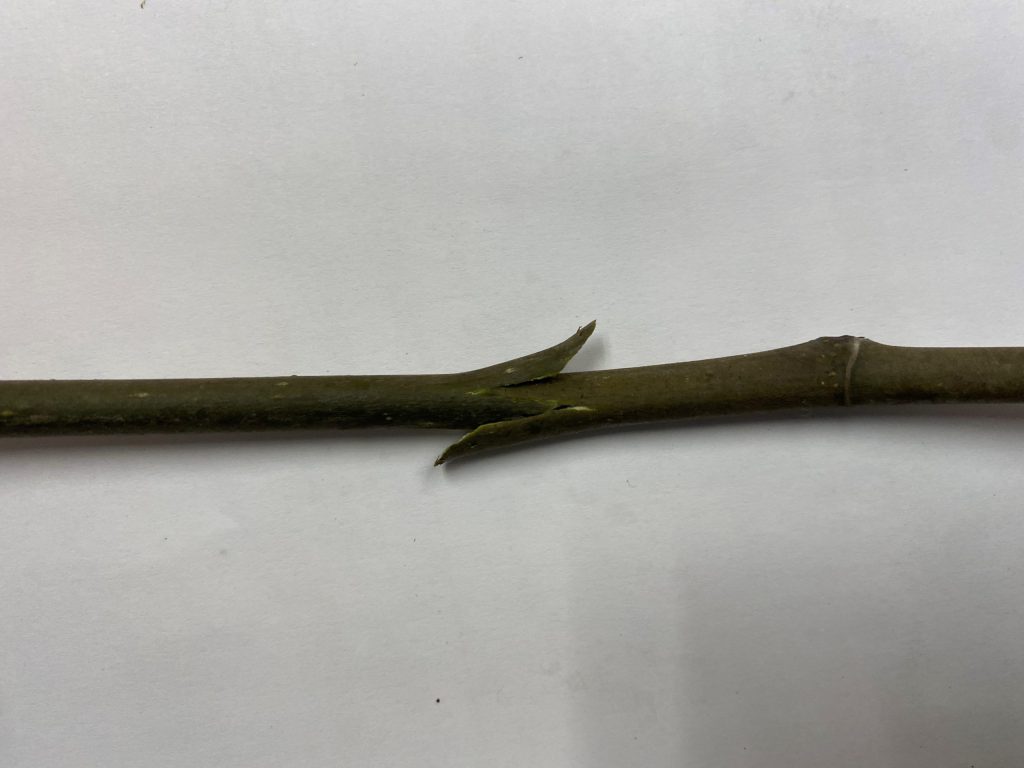
A bench graft union. Photo Credit: Matt Lollar, University of Florida/IFAS Extension – Santa Rosa County
Achieving good bench graft unions takes skill and some practice. Some people have better success using a four-flap or banana graft technique. This type of graft is accomplished by stripping most of the bark and cambium layer from a 1.5″ section of the base of the scion and by folding the back and removing a 1.5″ section of wood from the top of the rootstock. A guide to this type of graft can be found on the Texas A&M factsheet “The Four-Flap Graft”.
Grafting is a gardening skill that can add a lot of diversity to a garden. With a little practice, patience, and knowledge any gardener can have success with grafting.
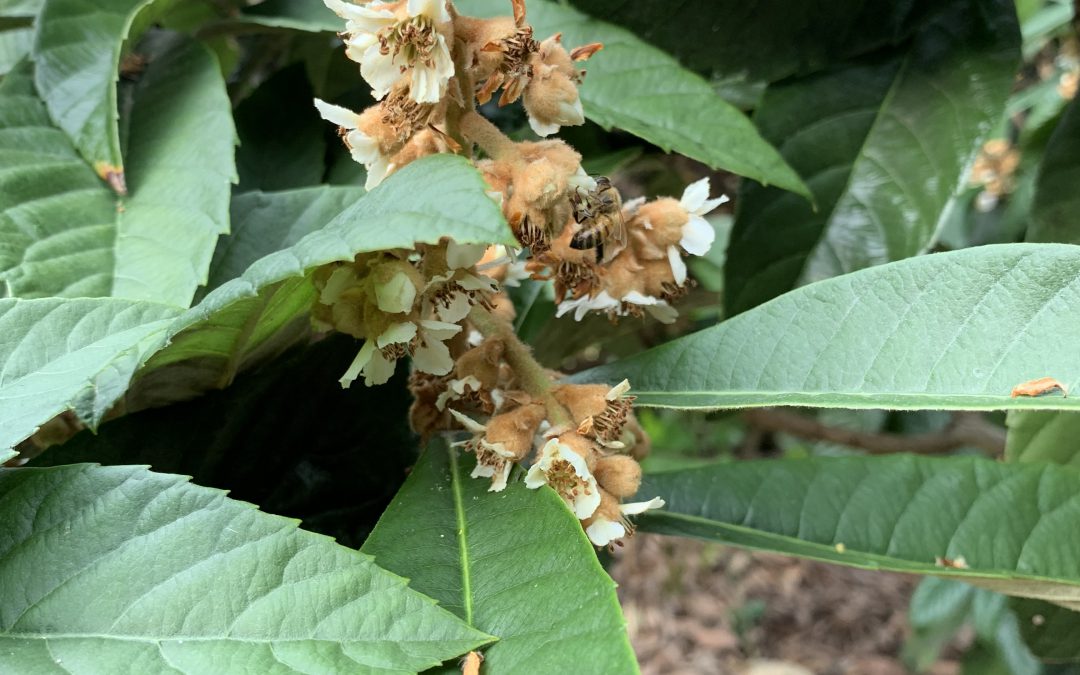
by Matt Lollar | Dec 10, 2019
Loquat trees provide nice fall color with creamy yellow buds and white flowers on their long terminal panicles. These small (20 to 35 ft. tall) evergreen trees are native to China and first appeared in Southern landscapes in the late 19th Century. They are grown commercially in subtropical and Mediterranean areas of the world and small production acreage can be found in California. They are cold tolerant down to temperatures of 8 degrees Fahrenheit, but they will drop their flowers or fruit if temperatures dip below 27 degrees Fahrenheit.
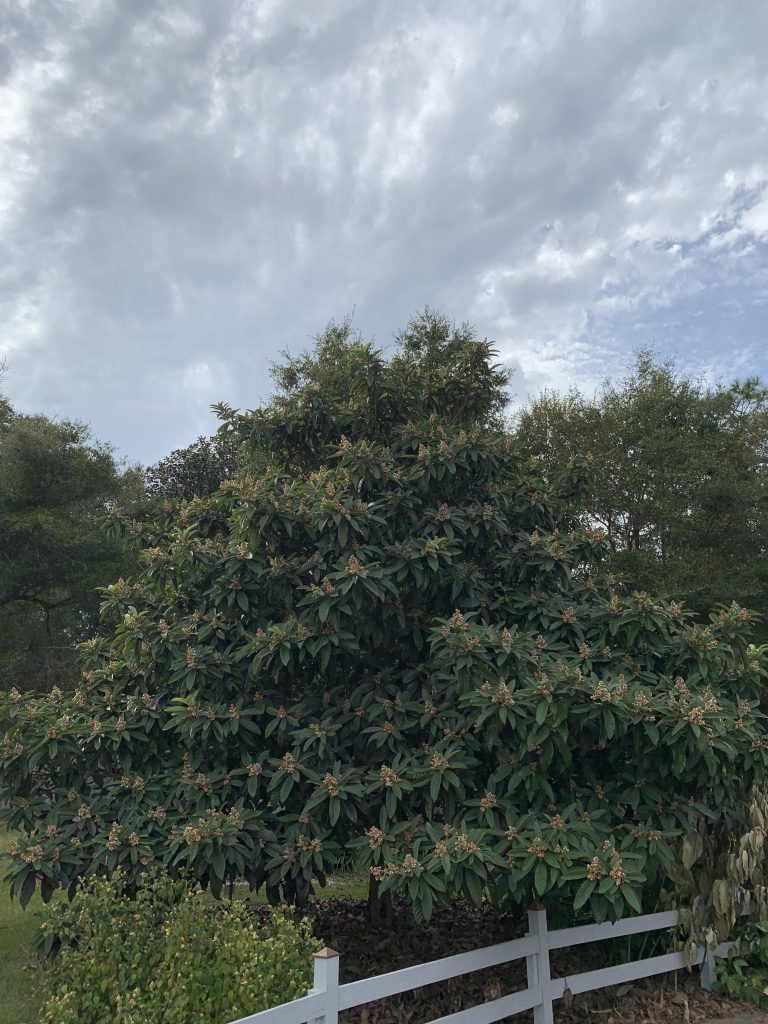
A beautiful loquat specimen at the UF/IFAS Extension at Santa Rosa County. Photo Credit: Matt Lollar, University of Florida/IFAS – Santa Rosa County
Leaves – The leaf configuration on loquat trees is classified as whorled. The leaf shape is lanceolate and the color is dark green with a nice soft brown surface underneath. These features help give the trees their tropical appearance.
Flowers – 30 to 100 flowers can be present on each terminal panicle. Individual flowers are roughly half an inch in diameter and have white petals.
Fruit – What surprises most people is that loquats are more closely related to apples and peaches than any tropical fruit. Fruit are classified as pomes and appear in clusters ranging from 4 to 30 depending on variety and fruit size. They are rounded to ovate in shape and are usually between 1.5 and 3 inches in length. Fruit are light yellow to orange in color and contain one to many seeds.

A cluster of loquat flowers/buds being pollinated by a honey bee. Photo Credit: Matt Lollar, University of Florida/IFAS – Santa Rosa County
Propagation – Loquat trees are easily propagated by seed, as you will notice as soon as your tree first bears fruit. Seedlings pop up throughout yards containing even just one loquat tree. It is important to note that the trees do not come true from seed and they go through a 6- to 8-year juvenile period before flowering and fruiting. Propagation by cuttings or air layering is more difficult but rewarding, because vegitatively-propagated trees bear fruit within two years of planting. Sometimes mature trees are top-worked (grafted at the terminal ends of branches) to produce a more desirable fruit cultivar.
Loquat trees are hardy, provide an aesthetic focal point to the landscape, and produce a tasty fruit. For more information on growing loquats and a comprehensive list of cultivars, please visit the UF EDIS Publication: Loquat Growing in the Florida Home Landscape.













